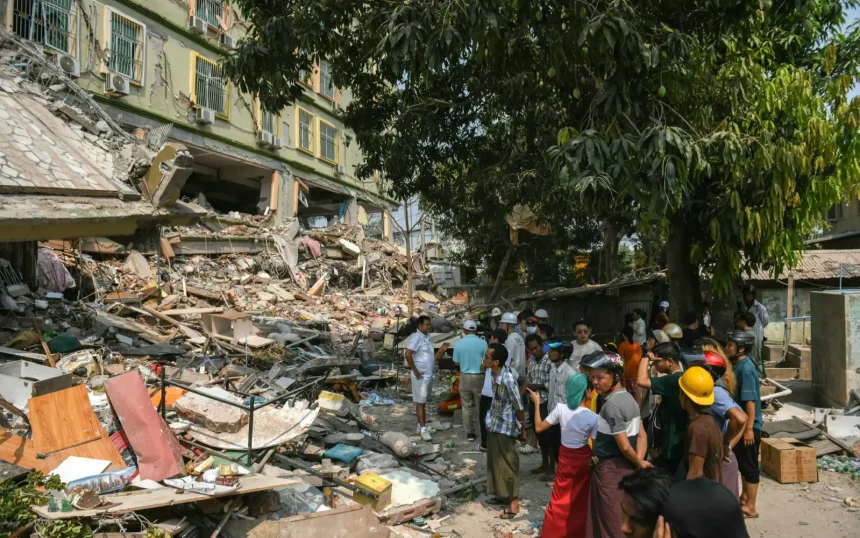A catastrophic 7.7-magnitude earthquake struck central Myanmar on March 28, 2025, leading to widespread destruction and a rapidly escalating death toll. As of March 30, official reports confirm over 1,600 fatalities, with thousands more injured or missing. Survivors, often using only their bare hands, are desperately searching through rubble for loved ones and others who may still be trapped.
Unprecedented Destruction Across Myanmar
The earthquake’s epicenter was near Mandalay, Myanmar’s second-largest city, which has suffered extensive damage. Buildings have collapsed, roads have cracked, and vital infrastructure has been severely compromised. The tremors were felt as far away as Bangkok, Thailand, where additional casualties and structural damages have been reported.
Challenges in Rescue Operations
Rescue efforts are being severely hampered by the extent of the destruction and the ongoing civil conflict within Myanmar. Many areas remain inaccessible due to damaged roads and bridges, and the lack of heavy machinery forces volunteers and emergency responders to rely on manual labor to clear debris and search for survivors. The situation is further complicated by disrupted communication networks and power outages.
International Aid and Support
In response to the disaster, neighboring countries and international organizations have begun to mobilize aid. India has launched “Operation Brahma,” deploying specialized medical task forces and delivering essential supplies to the affected regions. China, Russia, and the United States have also extended humanitarian assistance, including search and rescue teams, medical aid, and financial support.
Community Resilience Amidst Tragedy
Despite the overwhelming devastation, communities are demonstrating remarkable resilience. Local volunteers are working tirelessly alongside international teams to locate survivors, provide medical care, and distribute food and water. Temporary shelters have been established for those displaced, and efforts are underway to restore essential services.
Conclusion
The earthquake in Myanmar has resulted in a profound humanitarian crisis, with the death toll surpassing 1,600 and expected to rise as rescue operations continue. The combination of natural disaster and existing political instability presents significant challenges to relief efforts. The international community’s support will be crucial in addressing immediate needs and aiding in the long-term recovery and rebuilding of affected communities.











